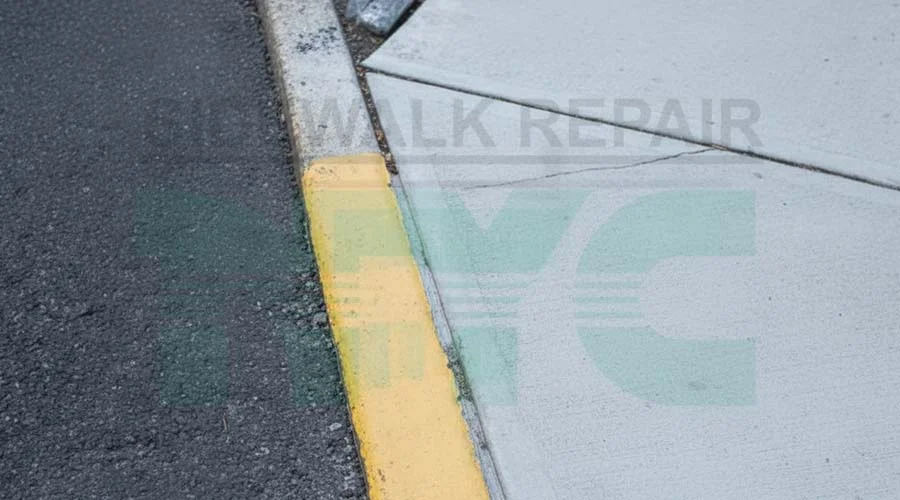Is the Curb Considered Part of the Street or the Sidewalk?

Ever taken a stroll through an NYC neighborhood and glanced down at that narrow strip between the street and the sidewalk, “the curb,” and thought, Wait, who actually owns this thing? Is it part of the sidewalk or the street? And if it breaks, who’s footing the bill?
At first, it feels like a small, almost trivial detail. But in a city like New York, where property lines, maintenance rules, and city regulations can get pretty complicated, that simple little question actually opens the door to something much bigger.
So keep reading to get a clear picture in terms of the responsibilities and ownership.
What is a Curb?
A curb is the raised edge that separates the sidewalk from the roadway. It’s a defining feature of urban infrastructure, but its function goes far beyond being a boundary line. Curbs serve multiple purposes:
- Drainage: Directing stormwater to catch basins
- Structural protection: Preventing erosion and ponding
- Sidewalk preservation: Shielding pedestrian areas from vehicular
damage
- Safety: Creating a physical barrier between moving vehicles and foot traffic
Read: What curb option is best for your property?
Is the Curb Part of the Sidewalk or the Street?
From an ownership and regulatory standpoint in NYC, the answer is clear:
“Curbs are part of the street and fall under the ownership and maintenance of the City of New York.”
While the curb is physically adjacent to the sidewalk, it is legally treated as an extension of the street rather than the sidewalk. This distinction has implications for maintenance, permits, and city responsibility.
Why the Distinction Matters
Understanding the difference between the sidewalk and the curb is crucial because it affects:
1. Liability
In most cases, property owners are not responsible for damage to or deterioration of the curb, since the curb is city-owned. Unlike curbs, sidewalks must be maintained in safe condition by the property owner.
2. Repair Responsibility
If a sidewalk is cracked, uneven, or otherwise defective, the NYC Department of Transportation (DOT) will issue a Notice of Violation to the adjacent property owner.
However, if a curb is missing or severely damaged, the city may repair or replace it free of charge to the property owner..
That said, the DOT encourages homeowners to coordinate sidewalk and curb repairs to minimize future disruption and preserve overall sidewalk integrity.
3. Permit Requirements
Permits are required if you plan to alter or construct a curb or curb cut (in the case of a driveway). Any unauthorized curb work, especially curb cuts for driveways, can lead to violations or enforcement action.
4. Drainage and Erosion
Broken or worn curbs can prevent water from reaching catch basins, causing puddles, erosion, or water seepage on nearby sidewalks and properties. This is one of the reasons the City takes responsibility for curb maintenance, as it ties into overall stormwater management systems.
Conclusion
So, is the curb part of the street or the sidewalk? In NYC, it’s officially part of the street, owned and maintained by the City. While property owners are responsible for their sidewalks, curb maintenance generally falls under the City’s jurisdiction. Still, when planning sidewalk repairs, it’s wise to check the condition of the curb and coordinate improvements accordingly. Understanding these distinctions can help you avoid unnecessary costs, plan better repairs, and stay compliant with city rules. For sidewalk and curb repair or replacement, contact the experienced team at DOT Sidewalk Repair NYC.
